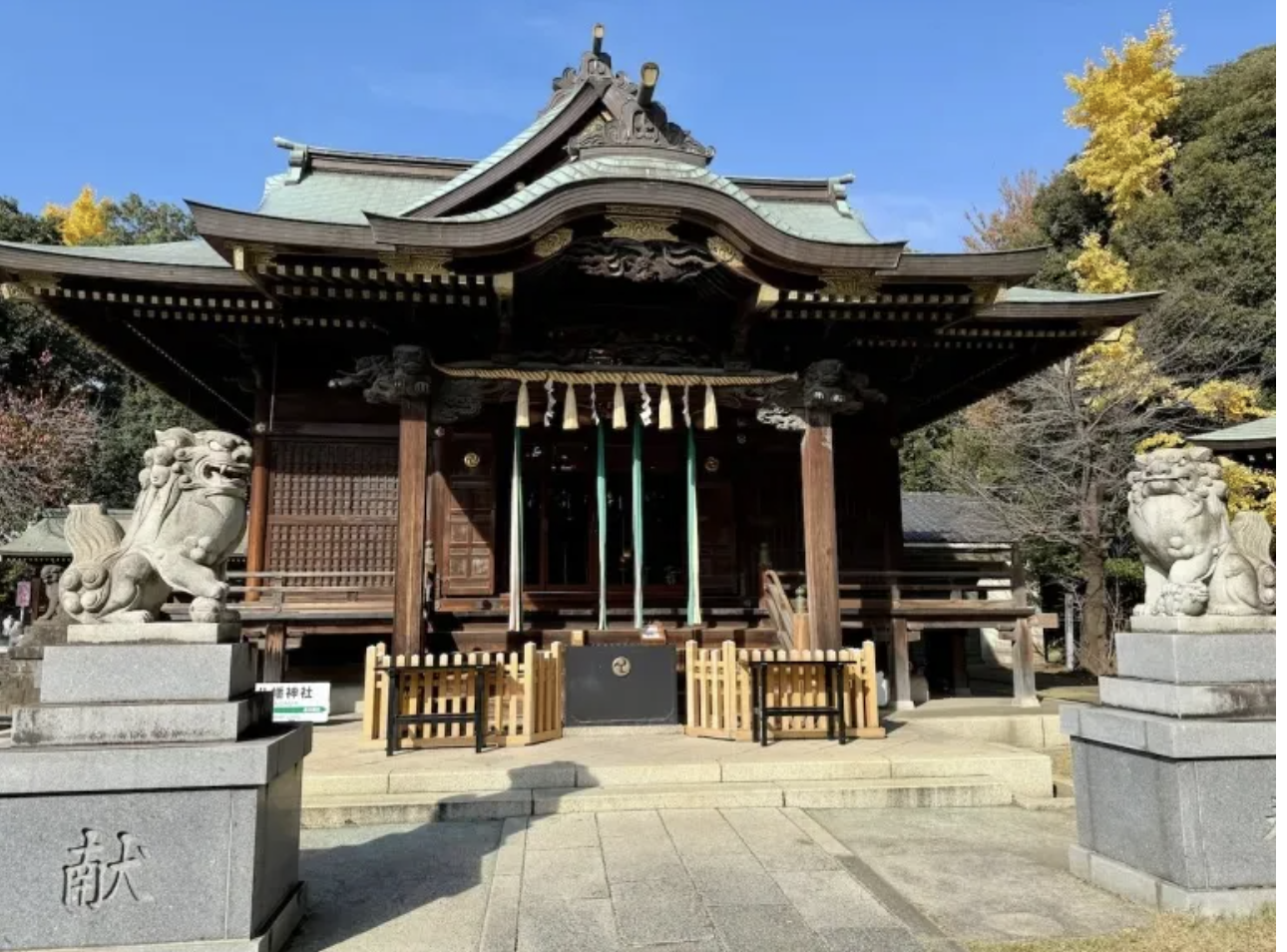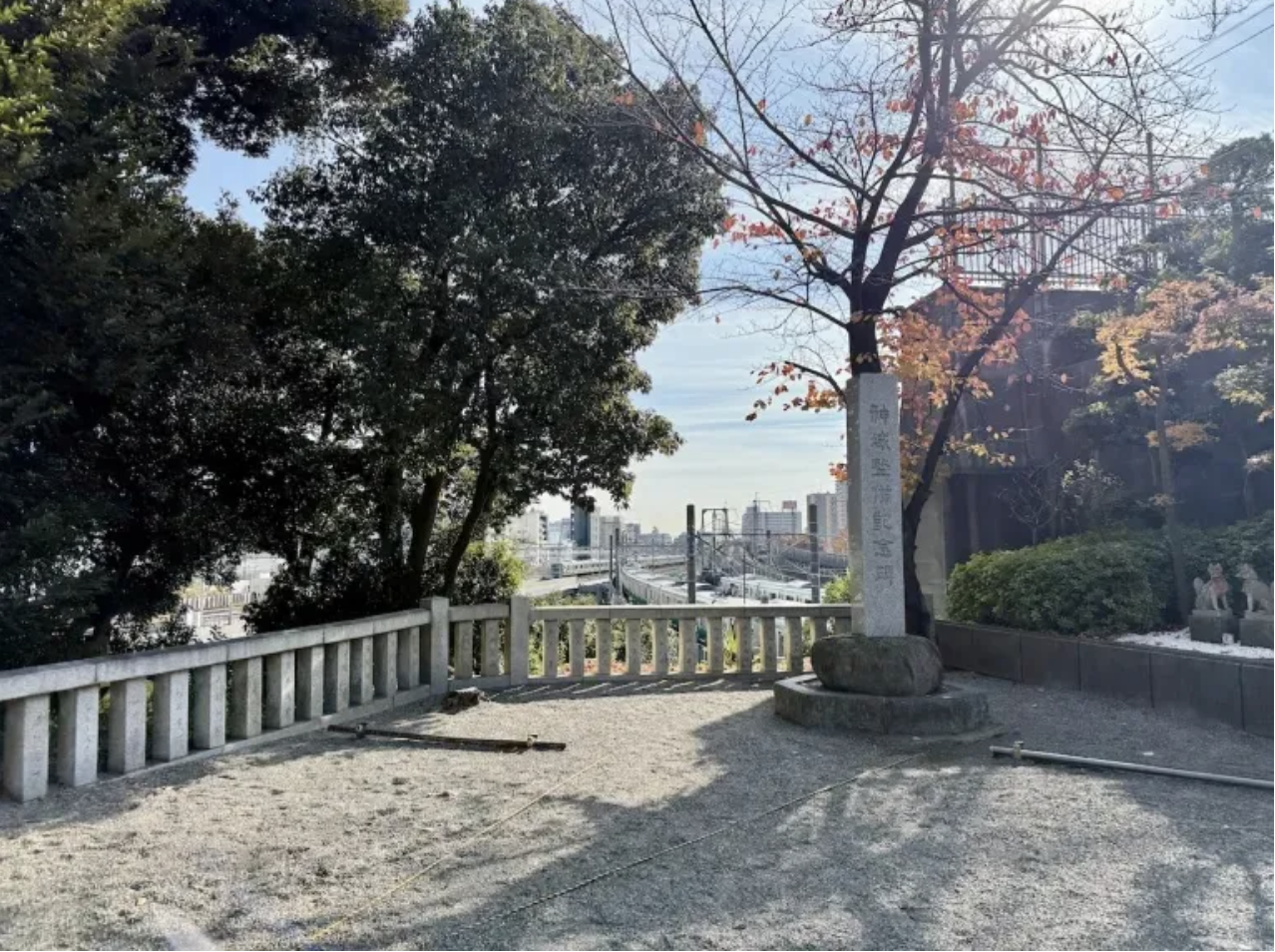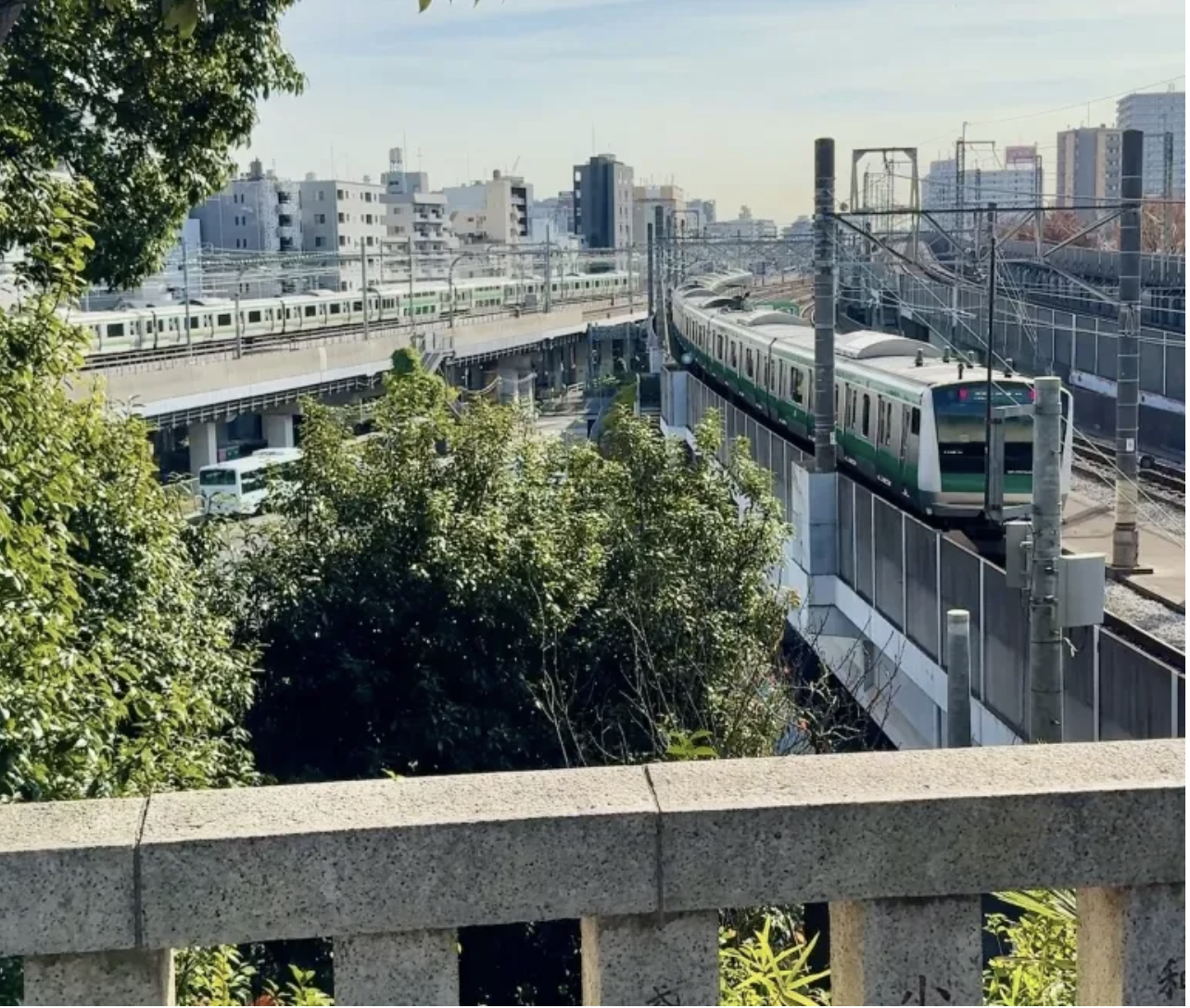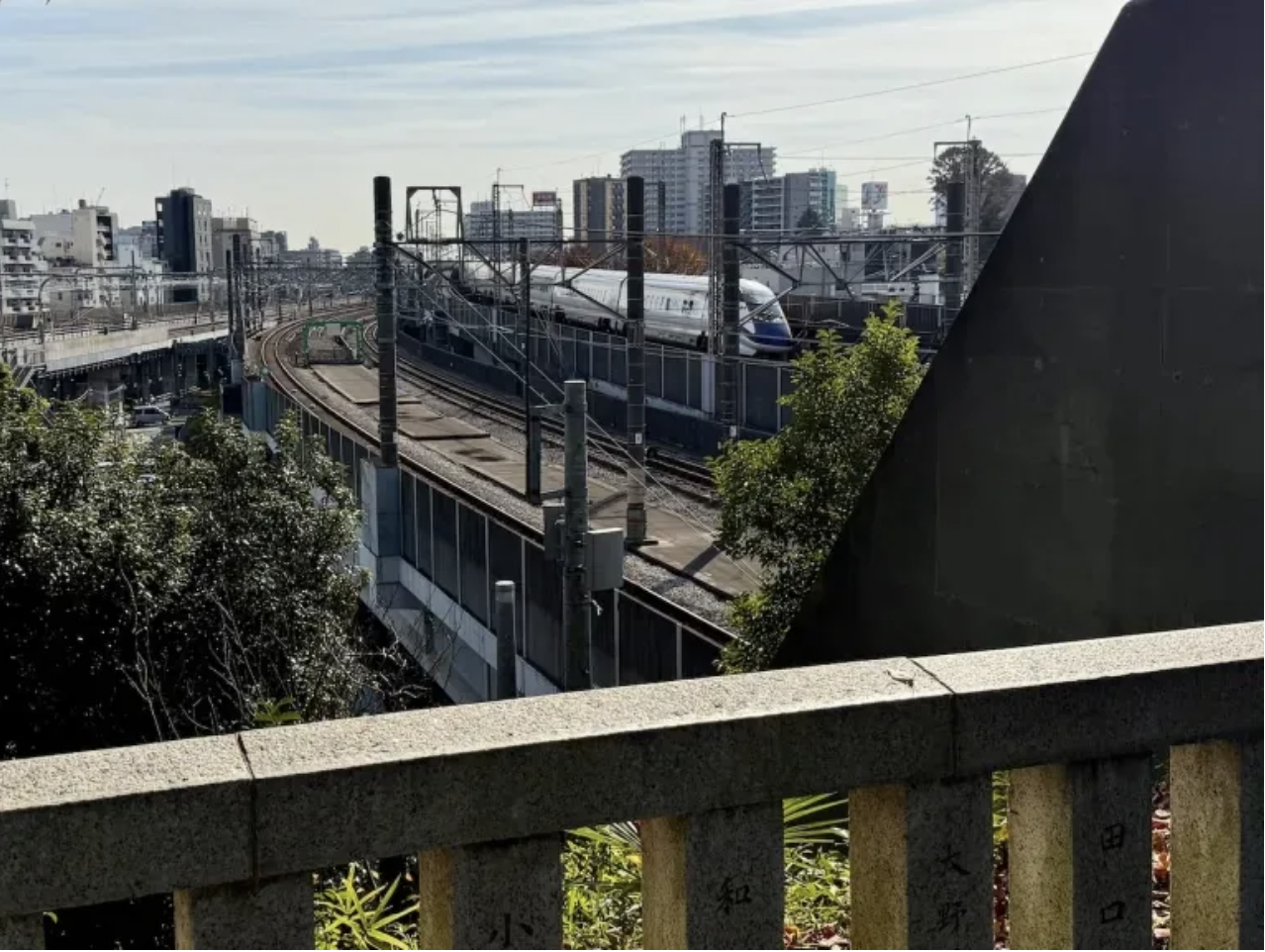A big part of what makes Japan so fascinating is how the traditional and modern aspects of the country so often exist side-by-side…or as we’re looking at today, literally on top of each other.
On a recent excursion to the Akabane neighborhood in Tokyo’s northern Kita Ward, we were taking one of our usual ambling exploratory strolls when we spotted a sign underneath a railroad underpass saying “Hachiman Shrine entrance” (八幡神社入口).

Intrigued, we made our way up the incline next to the sign, passing beneath the stone torii gate that marks the boundary of the shrine’s sacred grounds.
Akabane Hachiman Shrine has a very long history, having been founded roughly 1,225 years ago. The key figure in its creation was Sakanoue no Tamuramaro, a samurai general and later shogun during the Heian period of Japanese history. While on a campaign, Sakanoue no Tamuramaro stopped at this site to pray to Hachiman, the Shinto god of battle, and from that the shrine was established.

Akabane Hachiman Shrine is a small but beautiful shrine, with a rustic simplicity to its architecture. Being positioned at the top of a hill about 20 meters higher than its round-level surroundings means there’s also a nice view.

It’s also a unique view, because the shrine, which is about a 10-minute walk north from the west exit of Akabane Station, stands between two train lines.

From the shrine grounds you can spot trains traveling on the Saikyo, Keihin Tohoku, Utsunomiya, and Takasaki Line. Most special of all, you can also see bullet trains on the Tohoku/Joetsu shinkansen line, and that line actually leads into a tunnel that goes underneath the shrine grounds.

Akabane Hachiman is the only shrine in Japan with a shinkansen tunnel underneath it…though not initially by choice. When this section of Japan’s high-speed rail network was being planned, engineers had no viable alternatives to going through the base of the hill that the shrine sits on.

At the time, the shrine was opposed to the plan, but eventually acquiesced. In time, though, Akabane Hachiman Shrine has come to embrace its unique status. According to the shrine’s official website, along with battlefields Hachiman’s divine protection jurisdiction includes general transportation, and so the Shinkansen trains that pass underneath the shrine grounds every day receive a sort of blessing by proximity, contributing to passengers’ safe arrival at their intended destinations.
Because of its rail relations and opportunities to see several different trains/lines, Akabane Hachiman Shrine has also become a popular place among rail fans, and another sign that the shrine is now OK with this is a literal sign on the shrine grounds with Akabane Hachiman Jinja (Akabane Hachiman Shrine) written in the font and style of a train station sign.

That’s not to say that the place is constantly swamped with train otaku. When we stopped by on a weekday morning, there was hardly anyone else there, and we were able to soak up a mix of relaxing and exciting atmospheres as we enjoyed both the peaceful shrine grounds and the speedy trains, and when it was time to leave we felt extra-protected on our train ride back to the office.
Shrine information
Akabane Hachiman Shrine / 赤羽八幡神社
Address: Tokyo, Kita-ku, Akabanedai 4-1-6
東京都北区赤羽台4丁目1-6
Open 9:30 a.m.-4 p.m. (weekdays November-March), 9:30 a.m.-4:30 p.m. (weekends November-March), 9:30 a.m.-4;30 p.m. (weekdays April-October), 9:30 a.m.-5 p.m. (weekends April-October)
Closed Tuesdays
Photos ©SoraNews24
Read more stories from SoraNews24.
-- “Cat shrine” status causing problems for Japan’s millennium-old Izumoiwai Shrine
-- Yaoi fans rejoice as Shinto shrine seems to open part-time positions for male shrine maidens
-- Kakiage towers and Italian soba? We try out a unique soba restaurant in Tokyo
- External Link
- https://soranews24.com/2024/12/10/this-is-japans-only-shrine-with-a-shinkansen-tunnel-underneath-it/
















1 Comment
Login to comment
Asiaman7
Going a few kilometers north, that same Shinkansen line crosses the JR Musashino Line, which tunnels under an elementary school that opened in 1874 — Minami Urawa Elementary School. The children run on their dirt ground with trains passing underneath. And a block away is a JR dormitory, which the Musashino Line also passes below.